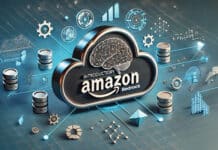Oracle Cloud Platform is a Platform-as-a-Service (PaaS) offering. It delivers a broad selection of next-generation, enterprise-grade cloud computing services, spanning SaaS, PaaS and IaaS. Oracle has embedded innovative technologies in every aspect of its cloud, enabling organisations to reimagine their businesses, processes and customer experiences. Siddhartha Agarwal, group VP – product management and strategy, Oracle Cloud Platform, in a face-to-face interaction with Rahul Chopra, editorial director, EFY Group, throws light on Oracle’s cloud offerings, which includes the world’s first and only autonomous database, on IoT, and a lot more.
Q. How important is the cloud for Oracle’s business?
The cloud is not a new thing; it has been around for years. However, it’s only now that enterprises are looking to take advantage of all that the cloud has to offer so they can gain value faster, become more agile and be able to create applications or differentiate themselves from each other. Nobody understands the enterprise software landscape like we do, and we’re fully geared to become the most preferred enterprise cloud provider. The beauty of the cloud is that it’s a great equaliser, in that the same modern, enterprise-grade cloud can be used by mid-sized businesses as well as startups on a pay-as-you-go model. We already have several cloud customers of all sizes, across industries, benefitting from our modern cloud offerings.
While the cloud is our Number 1 priority, we understand that different customers are at different stages in their cloud journey. We offer them the flexibility and choice of their cloud deployment based on their organisational readiness (public/hybrid/Oracle Cloud at Customer, on-premises).
Q. I am not entirely sure, as of now, whether developers will name Oracle as the key cloud player. Are you following a strategy that approaches customers directly rather than taking the developer route? Or is it because Oracle entered this arena a little late? What’s your take on this?
Oracle is the only full-stack, enterprise-grade cloud provider (offering SaaS, PaaS and IaaS) and our customers are increasingly turning to us to future-proof their business. We are building machine learning (ML) and intelligence into each one of our cloud services. If you look at the Gartner report, you will see that we are among the top four providers in the cloud space. Our installed base of customers is extremely interested in understanding what Oracle is offering. They also look into how they can leverage Oracle, not just for the database but also for app integration, data integration, security, analytics, management and more, using the cloud.
On the SaaS side, various analyst reports indicate that we’re well on our way to becoming the world’s No. 1 cloud applications player. We started on the infrastructure and platform delivered as service pieces four to five years ago. We are talking a lot about our capabilities, especially in the context of customers, who have extracted some meaningful value from our cloud. Our autonomous database is a good example.
More and more developers are realising why they should use Oracle Cloud — given our modern, open, easy cloud platform.
“Like I mentioned earlier, we’re embedding intelligence into each of our cloud services, and at times customers don’t even know or realise this.”
Q. Why should developers prefer Oracle rather than your counterparts? What’s unique about Oracle’s offerings?
At the end of the day, developers think of building an application that connects into some other applications. They might be trying to modernise an on-premise application or build completely new capabilities. And what we have done is — we have created a differentiated value for them at the database tier. They don’t have to think about managing and operating a database.
If anyone wants to build a chatbot, we provide a very easy way to do so, with intelligence built into the chatbot — from integration to the back-end system support.
Developers who are building enterprise grade applications should be looking at what we’re doing to make their life simpler. If you look at the blockchain, it is a very popular technology, as is Hyperledger Fabric — something that is open source. What we have done is that we have built an enterprise grade blockchain cloud service, so the security, scalability, and performance is the same as you get from the enterprise grade Oracle database. This helps developers, as they now only have to think about smart contracts that they want to write with APIs. They don’t have to worry about any of the underlying infrastructure. In short, our focus is to provide a bunch of tools to the developers so that they’re self-sufficient.
Q. Are blockchain and AI the components that developers choose from your cloud services?
First of all, we are embedding AI into all of our cloud services. The autonomous database and analytics have ML built in. Therefore, the developers get access to AI just by using our cloud services. They can pick and choose themselves, for example, management and monitoring applications on the cloud. They do not need to know thresholds. In addition, we are providing the developers the ability to build models, compare models, expose models as APIs, etc. We are also providing these as services to developers. So we’re seeing developers use a wide range of our cloud services.
Q. What are you doing to support the developers?
We are doing a few things to support them. First, three years ago, we created a targeted platform to help developers understand the openness of our platform — how intelligent it was and how to easily use it. As part of that initiative, we created a dedicated developer site: developer.oracle.com, where they could get access to all our resources that they were interested in. Second, the goal of the Oracle Code event series — a free knowledge exchange platform for developers, by developers — is to educate them around cutting-edge technologies. These events have a good mix of Oracle as well as non-Oracle speakers. This is helping developers get a 360 degree view of our technology.
We are also empowering developers to try our cloud as a self-service model. However, there is always a connection for them to ask for help. In addition, we have created educational modules for developers to learn on their own.
Q. What is the response to Oracle’s cloud offerings in the Indian market?
The response has been great. India is a key growth market for us within the APAC region, and we’re closely working with customers to help them in their journey to the cloud. There are a lot of Indian customers who are using our cloud and realising significant value. One good example is Bajaj Electricals. The company used Oracle’s AI enabled intelligent bot service, and was able to build and pilot an intuitive, consumer-friendly chatbot in just under three weeks. This has enabled the company to reduce its call centre headcount significantly, as a vast number of consumer enquiries are getting addressed via the chatbot.
“We have just added more intelligence to the Oracle Database and crafted the Oracle Autonomous Database.”
Q. Can you tell us something about the type of solutions you’re offering?
We continue to push the envelope of what’s possible. Our complete focus is on creating value for our customers. For example, our SaaS applications have the capability to harness data intelligently to enable a customer service representative to find out the next best offer, a sales representative the next best opportunity and a recruiter the next best candidate to invest in. We are building that kind of intelligence into our SaaS applications by leveraging first party data, third party data and ML models. Our focus is more on how one can get actionable intelligence as opposed to just offering the platform to build a whole bunch of different intelligent pieces. Similarly, we are embedding intelligent services into our management and analytics offerings. That’s how we are delivering the intelligence aspect of our platform.
The Oracle Autonomous Database, which is the world’s first and only ‘self-driving, self-securing and self-repairing’ database, is one of the most important and successful new product introductions in our company’s 40-year history. Powered by advanced machine learning, the Oracle Autonomous Database can scale itself, patch itself, manage itself — and it is continuously learning. In addition, you don’t have to do indexing. A developer can just focus on building the next killer app, and not get bogged down with database management or any other ‘less creative, mundane’ tasks.
Codeinks, a Bengaluru based ecommerce software product startup, was looking to extract deep levels of insight into user behaviour and past performance to do better future predictions of trends. Oracle Autonomous Data Warehouse Cloud made a huge difference and the company was able to achieve performance improvements ranging from 30 to 50% on average for its defined scenarios.
Q. How do you see the adoption of AI and ML technologies on a large scale?
I think there are two things that have made AI and ML more pervasive in recent months. First, the amount of data that’s being generated and collected. Second, the easy availability of the heavy duty computing capacity needed to make sense of this data, quickly. GPUs and Flash memories that can run lots of applications in memory are now available. There have been high bandwidth connections between various nodes – whereby nodes can talk to each other. These are some of the developments that have fundamentally made ML and AI possible at scale. I think the place where there is a broader adoption of ML is in the conversational paradigm of AI, where people engage in intelligent conversations through the messaging interface.
Like I mentioned earlier, we’re embedding intelligence into each of our cloud services, and at times customers don’t even know or realise this. If we revisit the autonomous database example, we are able to patch the database, scale it, optimise the queries, as well as create or remove the indexes that need it. And that’s where the mass adoption of AI happens, because anyone who is building the cloud application and leveraging any of these cloud services can start seeing the value.
Q. You have mentioned the autonomous database. Is this only on the cloud or is an on-premise version also available?
At the moment, the Oracle Autonomous Database is only on the cloud. However, we are working on getting the on-premise version as well, in the coming months.
Q. Is the autonomous database open, or is it available in Oracle’s data centres only?
We have just added more intelligence to the Oracle Database and crafted the Oracle Autonomous Database. While it’s not open source based, per se, the Oracle Database is one of the most flexible databases out there — it is extremely open in a way that it can run anywhere. If you look at some of our competitors who offer cloud based services, they’re tied strictly to their cloud and can’t run anywhere else. So, you don’t have the portability — the ability to run the Oracle content either in the public cloud or within your data centre or in a third-party cloud.
Q. There is a debate regarding the law that mandates data to reside within the country in which it has been collected. What are your thoughts on that?
We’ll abide by all government regulations, not just in India, but in every country/region we operate in. We believe Oracle Cloud at Customer is tailor-made for companies (public or in the corporate sector) looking to enjoy all the benefits of a public cloud environment, but behind their own firewall (inside their own data centre). Further, we’ve already announced that we’ll soon be opening our India data centre later this year; so we’re well prepared to address local market opportunities and emerge as a leading cloud provider in India.
Q. Could you explain concepts like ‘universal credits’ and ‘Bring your own Licence’?
One of the key things we realised, based on the feedback we got from our customers, is that that they want flexibility with what they use, when they use it and how much of it they use. If you want them to commit to how much database capacity they want to buy, how much of integration capacity they want to invest in upfront, or how much of mobile cloud service they want to consume, then they actually don’t know because utilisation in the cloud could suddenly scale up or not happen at all. Therefore, we introduced this notion of ‘universal credits (UC)’ pricing, whereby we give them the flexibility to buy a pool of credits from Oracle, with which they are entitled to use all our cloud, IaaS and PaaS services. Their usage is metered and adjusted against their universal credits. In addition, when we release a new software or new cloud service, they are entitled to use those too.
We are making it easier for a customer to be able to use the cloud without worrying how much they’re using, what they’re using, etc. This is what our universal credits are about. Think of it as a virtual prepaid wallet you can use to consume any Oracle platform/infrastructure cloud service, including mixing and matching, based on the quantum of universal credits you have opted for.
With ‘Bring Your Own Licence (BYOL)’, we want to enable portability from on-premise licences to the cloud. If customers decide to migrate to the cloud from their on-premise usage model, they don’t have to pay double the cost for the licence. If they have licences that are unused (on-premises), they can actually bring that licence to the cloud, and there is no reason to charge them for the same licence again. Thus, the subscription price of that cloud service comes down significantly. This means they have to pay only for the infrastructure upon which it is running, and the automation and operations that we do. So that’s the logic behind ‘BYOL’.
Q. What is the role of Oracle’s Indian centre with respect to development and other work?
Oracle India is home to our largest employee base outside of the US. Our teams in India are involved with all our product lines, and there’s a lot of great collaboration happening. Oracle India is the only organisation outside Oracle’s headquarters in California to represent all divisions including sales, marketing, consulting, as well as support and education operations for domestic and global clients. In fact, India accounts for the organisation’s largest research and development investment outside US.
Q. With respect to developers, what is the USP of Oracle’s cloud platform?
The developers can easily add intelligence to their platform. They can leverage a very open platform that can run in multiple environments, and not just within the public cloud. They can run several functions on-premises or within the public clouds. They’re able to deliver hybrid capabilities to an application that can either work on-premises or on the public cloud. Our goal is to give them better functionality out-of-the-box — that is pre-assembled so that they can focus on their business differentiators and accelerate innovation.
At the end of the day, developers need rich and robust platform capabilities. They want the ability to choose any programming language, database, operating system, virtualisation technology and developer tool, including open source and third-party options. Oracle Cloud Platform includes key capabilities for embedded AI and machine learning to help developers build new AI based applications, and to enable IT and operations to automate the manual steps in provisioning, patching, tuning, and more. With the Oracle AI platform cloud service, developers and data scientists are empowered to develop and deploy machine learning models, and to manage the complete data science life cycle on their preferred open source frameworks.
Q. Coming to the Internet of Things (IoT) – are there platforms specifically designed for IoT applications?
A few years ago, we started a platform on which one could connect the gateways, gather the data coming from different sensors and make intelligence decisions at the edge. We can now aggregate the data into the public cloud, do predictive analytics on that data, and connect the devices to the back-end applications.
After building this platform, we realised that when you look at the usage of IoT, most people (for example, a person on the manufacturing plant floor or someone who is responsible for the servicing of goods) are not interested in building an application on the platform. They just want to use IoT and get the value out of it. Therefore, we built a set of SaaS applications on top of this platform. This platform is still available for anyone who wants to build an IoT app on it.
As of now, we have released a set of four SaaS applications as part of our IoT focus.
- Asset monitoring: This gives users the ability to monitor the assets, create a geofence, take sensor data from these assets, and get health information.
- Production line monitoring: When you are on a manufacturing floor, you can use this app to get insights from various sensors — the yield of a production line, and if the yield is going down in one line then how you can make it reconfigure itself, etc.
- Fleet monitoring: When there is a distribution of vehicles, this app helps you monitor these vehicles — how to monitor the drivers’ behaviour, how you will figure out where the vehicles are, etc.
- Connected workers: This gives users the ability to know where the workers are, what they are doing, etc.
If you look at these applications carefully, all of them have the same kind of platform — they all need sensor data, predictive analytics, a connection to back-end systems, secure authentication and communication from devices to apps, etc. This list comprises the first four apps we have built. We are now taking the blockchain and combining it with IoT applications.






































































